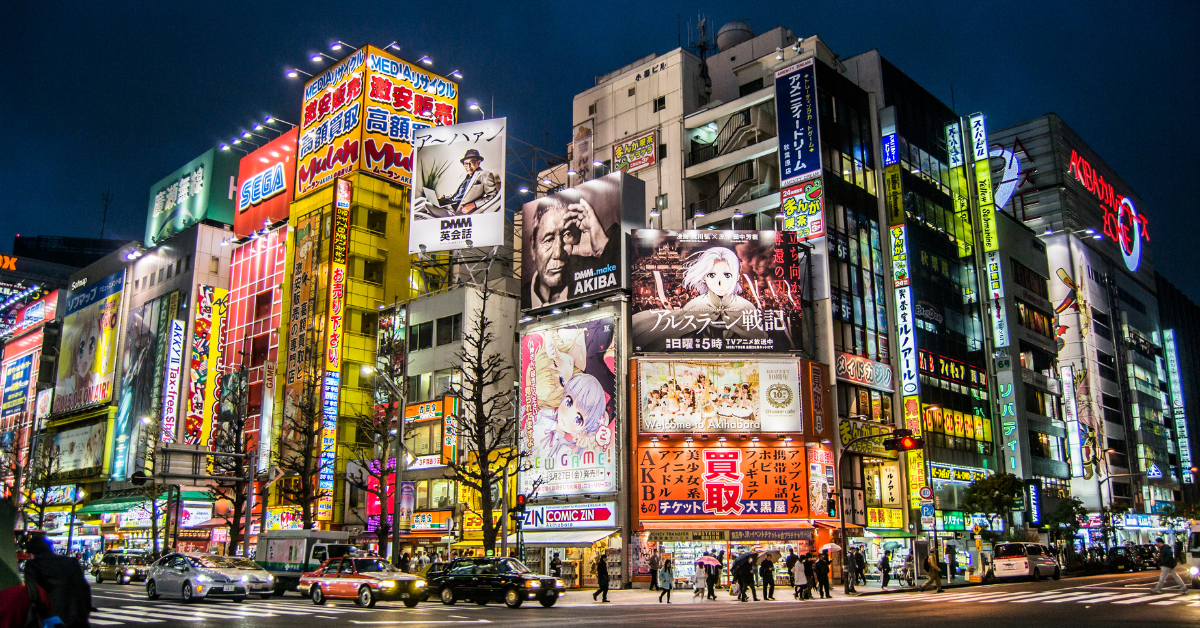Anime is not just entertainment. It is a reflection of Japanese creativity, philosophy, and daily life. With its unique art styles, emotional storytelling, and diverse genres, anime connects Japan with the world, inspiring fans to learn the language, visit anime locations, and appreciate Japanese culture. This guide will introduce you to anime’s origins, characteristics, genres, and global impact.
WHAT IS ANIME
Anime is Japanese animation featuring unique art styles, emotional storytelling, and diverse genres. Unlike Western cartoons for children, anime attracts teenagers and adults with deep plots, cultural references, and artistic expression. It represents Japanese creativity and has become an essential part of global pop culture. Many foreigners visit Japan for anime-related tourism, themed cafes, and shopping. Anime impacts fashion trends, language learning, and tourism, showing its powerful cultural presence.
| Feature | Detail |
|---|---|
| Origin | Japan, early 20th century |
| Target Audience | Children, teens, adults |
| Themes | Romance, fantasy, action, sci-fi |
| Global Impact | Influences fashion, tourism, language |
Anime is not merely entertainment but a cultural bridge connecting Japan with the world. Series such as Naruto, One Piece, and Demon Slayer inspire fans worldwide, creating communities that appreciate Japanese traditions, social values, and art.
HISTORY OF ANIME
ORIGIN AND EVOLUTION
Anime began in the early 1900s with silent black-and-white shorts. In 1963, Astro Boy by Osamu Tezuka revolutionised TV anime, introducing stylistic large eyes and dynamic movements. The 1980s saw titles like Dragon Ball and Gundam expand anime’s popularity. By the 1990s, Sailor Moon and Pokémon established anime as a global cultural force, leading to conventions and cosplay events. Modern production combines traditional hand-drawn frames with digital and 3D animation, allowing studios like Toei Animation and MAPPA to produce high-quality content. Streaming services now provide simultaneous international releases, expanding anime’s global reach.
| Decade | Key Development |
|---|---|
| 1960s | TV anime debut with Astro Boy |
| 1980s | Global expansion with Dragon Ball |
| 1990s | Pokémon and Sailor Moon international boom |
| 2000s | Digital production and global streaming |
Anime today addresses themes such as philosophy, psychology, and societal issues, reflecting its evolution from entertainment to cultural influence.
CHARACTERISTICS OF ANIME
ART STYLE THEMES AND STRUCTURE
Anime has distinctive characteristics summarised below.
| Feature | Description |
|---|---|
| Eyes | Large, expressive, conveying emotions |
| Hair | Unique colours and styles |
| Music | J-pop opening and ending themes |
| Culture | Festivals, food, traditions featured |
It focuses on emotional depth, moral dilemmas, and cultural authenticity, making it educational and entertaining. Anime also teaches about Japanese daily life, etiquette, and interpersonal relationships.
POPULAR ANIME GENRES
ACTION AND ADVENTURE
Action anime like Naruto, One Piece, and Demon Slayer showcase intense battles, character growth, and friendship themes. They teach courage, perseverance, and loyalty, motivating viewers to face challenges confidently.
ROMANCE AND SLICE OF LIFE
Romance anime such as Your Name or Clannad tell heartfelt love stories with beautiful animation. Slice of life anime shows daily routines and human emotions, promoting empathy and awareness of life’s subtle beauty.
FANTASY SCI-FI AND PSYCHOLOGICAL
Anime like Attack on Titan and Steins Gate explore deep philosophical and psychological topics. Death Note examines morality and justice, encouraging critical thinking about human nature and society.
ANIME PRODUCTION PROCESS
FROM MANGA TO ANIMATION
The anime creation process involves multiple steps.
| Stage | Description |
|---|---|
| Planning | Concept development, budgeting |
| Scriptwriting | Dialogues and sequences writing |
| Storyboarding | Scene layouts and transitions |
| Design | Character and background illustrations |
| Animation | Keyframes and in-between drawings |
| Voice Recording | Voice actors record character lines |
| Editing | Sound, effects, and final production |
Creating anime requires strong teamwork and artistic consistency, taking months to years with hundreds of staff involved.
| Role | Responsibility |
|---|---|
| Director | Supervises production vision |
| Animator | Draws frames and motion sequences |
| Designer | Creates character and environment art |
| Voice Actor | Brings characters’ emotions to life |
IMPACT OF ANIME ON GLOBAL CULTURE
ANIME’S INTERNATIONAL INFLUENCE
Anime shapes global youth culture, vocabulary, and fashion. Words such as kawaii and senpai are now internationally recognised. Anime tourism has grown, with fans visiting real-life locations from anime scenes. For example, Washinomiya Shrine became popular after appearing in Lucky Star. Akihabara remains a major destination for anime lovers, offering themed cafes, rare collectibles, and gaming shops. Anime also supports Japan’s economy through tourism, exports, and media sales, serving as cultural diplomacy to foster international ties.
| Impact | Example |
|---|---|
| Tourism | Pilgrimages to anime locations |
| Language | Japanese study among fans |
| Economy | Merchandise and event revenue |
| Culture | Influences global art and music |
RECOMMENDED ANIME FOR BEGINNERS
START YOUR ANIME JOURNEY
For newcomers, the following anime provide a rich introduction.
| Title | Genre | Summary |
|---|---|---|
| Naruto | Action Adventure | A ninja boy’s journey to become Hokage |
| Your Name | Romance Fantasy | Two teenagers swap bodies and meet through fate |
| Death Note | Psychological Thriller | A notebook grants the power to end lives |
| My Hero Academia | Action School | Students train to become professional heroes |
These series highlight anime’s storytelling diversity and cultural themes, offering emotional and intellectual experiences.
CONCLUSION
Anime provides more than entertainment. It offers insight into Japanese culture, social values, and creative thinking. From love stories to psychological thrillers and fantasy adventures, anime bridges cultures, inspires imagination, and teaches about humanity, relationships, and philosophical questions. Watching anime broadens perspectives, deepens empathy, and enriches knowledge about Japanese society and artistic traditions.






